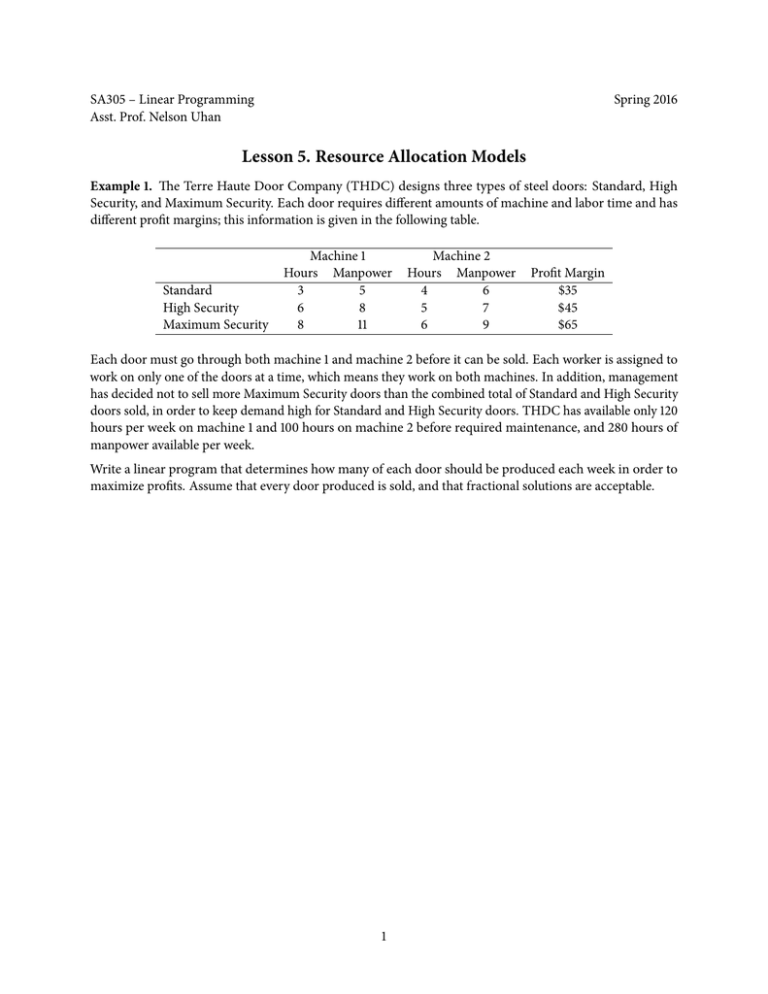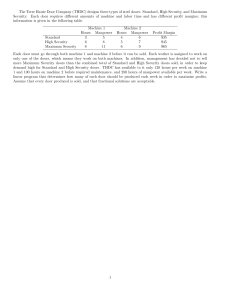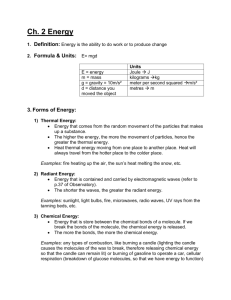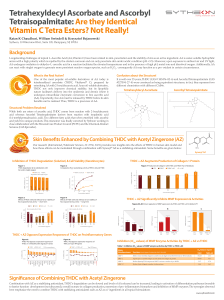Lesson 5. Resource Allocation Models
advertisement

SA305 – Linear Programming Asst. Prof. Nelson Uhan Spring 2016 Lesson 5. Resource Allocation Models Example 1. The Terre Haute Door Company (THDC) designs three types of steel doors: Standard, High Security, and Maximum Security. Each door requires different amounts of machine and labor time and has different profit margins; this information is given in the following table. Standard High Security Maximum Security Machine 1 Hours Manpower 3 5 6 8 8 11 Machine 2 Hours Manpower 4 6 5 7 6 9 Profit Margin $35 $45 $65 Each door must go through both machine 1 and machine 2 before it can be sold. Each worker is assigned to work on only one of the doors at a time, which means they work on both machines. In addition, management has decided not to sell more Maximum Security doors than the combined total of Standard and High Security doors sold, in order to keep demand high for Standard and High Security doors. THDC has available only 120 hours per week on machine 1 and 100 hours on machine 2 before required maintenance, and 280 hours of manpower available per week. Write a linear program that determines how many of each door should be produced each week in order to maximize profits. Assume that every door produced is sold, and that fractional solutions are acceptable. 1 Example 2. Fulkerson Candles makes three models of elegant Christmas candles. “Santa” models require 0.12 day of molding, 0.35 day of decorating, and 0.08 day of packaging per candle, and generate $16 of profit per candle sold. “Christmas Tree” models require 0.14 day of molding, 0.10 day of decorating, and 0.07 day of packaging per candle, and generate $11 of profit per candle sold. “Gingerbread House” models require 0.21 day of molding, 0.50 day of decorating, and 0.05 day of packaging per candle, and generate $27 of profit per candle sold. Fulkerson wants to maximize profit on what it makes over the next 20 working days with its 1 molder, 3 decorators, and 1 packager. Formulate a linear program that determines a profit-maximizing production plan. Assume that every candle made is sold, and that fractional solutions are acceptable. 2









